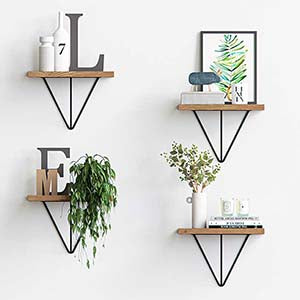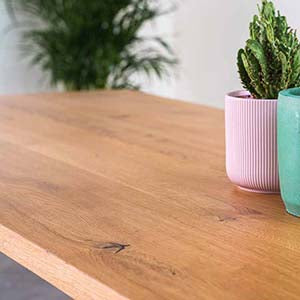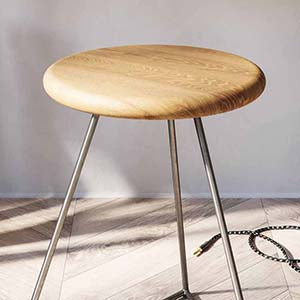Choosing the best way to connect table legs can often feel like a daunting task, fraught with uncertainty. The wrong choice can lead to instability, durability concerns, and a lack of peace of mind. Wobbly tables or legs that give way are common outcomes of inadequate connections.
Fear not, as we're here to guide you through how to connect table legs with complete confidence. From the straightforward screw-in method to the sturdy mortise and tenon joint, we’ll explore various effective techniques you can rely on.
Additionally, we’ll introduce you to The Hairpin Leg Co.'s premier selection of table legs, designed for not only stunning aesthetics but also simple and robust connections. No matter your skillset, connecting our furniture legs is as straightforward as it gets.
This article is your key to eliminating guesswork and achieving lasting stability in your furniture. So, let’s not waste any time - what is the best way to connect table legs?
What is the Best Way to Connect Table Legs?
Figuring out how to connect table legs is essential for ensuring both the stability and longevity of your furniture.
While there are a wide variety of methods you can choose from, we’ve narrowed it down to 6 that are actually worth exploring. After highlighting the pros and cons of each, we’ll give you our recommendation.
Direct Screw-In Method
The direct screw-in method is straightforward and widely used for its simplicity and reliability. It involves attaching the legs to the table using screws, which are directly inserted into pilot holes on the table's underside. While there are “technically correct” pilot hole sizes, depths and types, drilling a small hole a little bit smaller than your screws is usually enough. For example, if you are using a 4mm screw, then a 1.5 - 3mm pilot hole will usually do the job just fine. Just make sure you drill down to about the length of your screw.
This method is particularly beneficial for DIY enthusiasts, requiring minimal tools and technical skill. Contrary to popular opinion, the direct screw-in method is one of the most secure. You don’t need to overcomplicate things!
Metal Threaded Inserts
This method is ideal if you plan to remove and replace the legs many times, or if you are building a more professional product and want your customer to have a flat-pack assembly-like experience.
Threaded inserts are fitted to a wooden table top and provide a metal thread that you can bolt your legs into. The main advantage of threaded inserts is that they allow you to fit, remove and replace the table legs many times without risk of weakening the wood each time.
Many flat-pack furniture manufacturers (think Ikea) also opt to use something like this as it allows a simpler assembly for the customer. They can be provided with bolts and a hex-head allen key; this is all needed for a simple and reliable installation.
Hanger Bolt and Nut
The hanger bolt and nut method provides a secure connection, suitable for heavier tables. A hanger bolt is a double-ended screw where one end is screwed into the leg and the other end, featuring machine threads, protrudes to attach to the table.
A nut is then used to fasten the leg securely to the table. This method ensures a robust and stable connection, making it ideal for dining tables or desks that bear significant weight.
Brackets and Plates
Using brackets and plates is a reliable way to attach table legs for extra stability. Metal brackets or plates are affixed to both the table and the legs, usually with screws. This method distributes the weight evenly across the connection point, reducing the risk of wobbling.
Brackets and plates are especially suitable for larger, heavier table tops or when the table design does not allow for direct screwing of legs into the tabletop.
This method can accommodate various leg styles from hairpin legs to Scandi table legs, providing flexibility in design and functionality.
Mortise and Tenon Joint
The mortise and tenon joint is a classic woodworking technique revered for its strength and aesthetic appeal.
In this method, a tenon, or a protruding piece of wood at the end of the table leg, fits snugly into a mortise, a corresponding cavity on the underside of the table. This interlocking design creates a remarkably strong joint, ideal for heavy-use tables like dining and work tables.
While it requires more skill and precision to craft, the mortise and tenon joint offers unparalleled stability and a seamless look, making it a favored choice for artisan furniture makers.
Dowel Joint
Another traditional method to attach wooden legs is the dowel joint involves inserting wooden dowels into aligned holes in both the leg and the table for a secure fit. This method provides a strong, hidden bond without external hardware. It is particularly effective for medium-weight tables and offers a clean, professional finish.
Precise drilling and alignment are crucial for the success of this method, and while it may be more time-consuming than others, the dowel joint is a reliable choice for a durable and aesthetically pleasing connection.
Corner Brace
Finally, we have the corner brace method. Corner braces are a practical and straightforward solution for attaching table legs. These L-shaped metal brackets are fitted to the corner where the leg meets the tabletop, often accompanied by screws for additional support.
This method is quick and easy to implement, providing good stability for a variety of table types. Corner braces are especially useful in designs where traditional joinery methods are not feasible or where additional support is needed.
So, What is the Best Way to Connect Table Legs?
Now, which of these is the ideal approach for you? The best way to connect table legs depends on the table’s design, function, and the woodworker's skill level.
- For simplicity and ease, screw-in methods, corner braces, and hanger bolts are excellent choices.
- Threaded inserts are a great option if you plan to remove and replace the legs many times.
Each method has its merits, and the ideal choice should align with the specific requirements of your furniture project. If you’re unsure of how to connect table legs still, just get in touch with our customer support team and we’ll walk you through the process.
How to Connect Table Legs: Step-by-Step Guide
Ultimately, if you buy wooden table legs or metal table legs at The Hairpin Leg Co., your best bet is to follow the exact instructions included with your legs in the build book. That being said, we’ll walk you through the general overview of how to connect table legs below.
- Select the Right Method: Based on your table's design, weight, and use, choose an appropriate leg attachment method, such as screw-in, dowel joint, or mortise and tenon.
- Gather Necessary Tools and Materials: Depending on the method, you may need a drill, screws, dowels, hanger bolts, or a chisel. Ensure all materials match the specifications of your table and legs.
- Mark and Measure: Accurately measure and mark the points on the table where the legs will be attached. Precision at this stage is crucial for balance and stability.
- Preparation of Legs and Table: If using dowels or tenons, prepare the legs and table by drilling the required holes.
- Attach the Legs: Secure the legs using your chosen method. If screwing, ensure the screws are of appropriate length and don’t penetrate the tabletop.
- Final Check for Stability: Once attached, place the table upright and check for wobbliness. Adjust as necessary to ensure stability.
We have a more thorough guide on how to attach table legs if you’re interested. But below, we’ll discuss a few common mistakes to avoid when connecting table legs.
Common Mistakes to Avoid When Connecting Table Legs
In our years of experience here at The Hairpin Leg Co., we’ve seen a few of the same mistakes made time and time again. Here are some things to avoid:
- Incorrect Measurements: Mismeasuring can lead to uneven legs. Double-check all measurements before drilling or cutting.
- Using Incompatible Materials: Ensure that the screws, dowels, or hardware used are suitable for both the table material and the leg design.
- Over-Tightening Screws: This can strip the wood and weaken the connection. Tighten firmly but with care.
- Ignoring Wood Grain Direction: Especially important in joinery methods like dowels or mortise and tenon, aligning with the wood grain enhances strength and stability.
- Neglecting to Level the Table: After installation, ensure the table is level. Unevenness can lead to long-term structural issues.
By following the recommendations above and avoiding these common pitfalls, you can confidently attach table legs, ensuring a secure and stable result for your furniture. But, it all starts with the right furniture legs - like those available here at The Hairpin Leg Co.!
Explore the Best Selection of Table Legs at The Hairpin Leg Co.!
The Hairpin Leg Co. is proud to offer a premier selection of table legs, combining intuitive design with exceptional craftsmanship.
Our range caters to a vast array of styles, ensuring that no matter your project - be it a chic coffee table or a robust dining table - you'll find the perfect legs to complement it. Here are some of the most popular collections in our catalog to help narrow your search:
Each set of legs is meticulously crafted to simplify the connection process, backed by our carefully designed builders' books. These guides remove any guesswork, making installation straightforward and worry-free.
Whether you're a seasoned craftsman or a DIY enthusiast, The Hairpin Leg Co. is dedicated to delivering quality and style right to your doorstep. Our diverse selection, ranging from elegant hairpin legs to sturdy A-frames, ensures that you can bring your furniture visions to life with confidence and ease.
Choose The Hairpin Leg Co. for a seamless experience and results that speak for themselves. With a 60-day money-back guarantee, you’ve got nothing to lose!
Bringing Our Conversation on the Best Way to Connect Table Legs to a Close
In conclusion, the best way to connect table legs depends on the specific needs of your furniture project, with methods ranging from the simple screw-in approach to more intricate techniques like mortise and tenon joints.
Each method offers its unique balance of strength, aesthetic appeal, and ease of installation. Whether you prefer the robustness of hanger bolts and nuts or the elegance of dowel joints, the key is to choose a method that aligns with your table's design and functionality.
To simplify this process and ensure a perfect fit every time, explore the innovative and diverse range of table legs at The Hairpin Leg Co. Our expertly crafted legs are designed for easy installation, providing both style and stability for your furniture creations.
Shop with The Hairpin Leg Co. today for an effortless solution to all your table leg needs!












Leave a comment
This site is protected by hCaptcha and the hCaptcha Privacy Policy and Terms of Service apply.